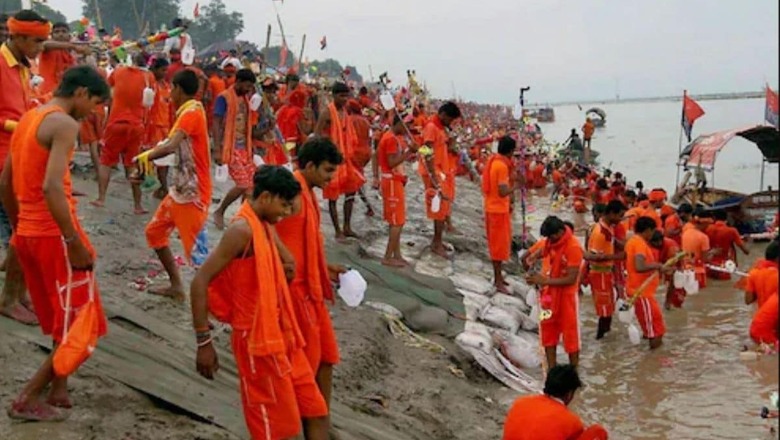
views
With Uttar Pradesh not complying with Uttarakhand’s plans to call off the kanwar yatra, in view of the pandemic, it is going to be a task for the hilly state to prevent an influx of pilgrims.
Here is a lowdown on what we know so far:
When does the yatra begin?
In the last week of July.
Will Uttarakhand seal its borders?
The Haridwar district administration has sealed its borders with neighbouring states following a ban on the annual ”Kanwar Yatra” of devotees of Lord Shiva in view of the COVID-19 pandemic.
Only people having written permission from their respective district magistrate are being allowed to enter Haridwar in their vehicles.
Not just Haridwar, the entire state this Wednesday decided to seal its borders to keep kanwariyas from entering.
The administration also said it is holding talks at the government level with neighbouring states.
Last year, Uttarakhand police had deployed the Provincial Armed Constabulary to seal its border with UP and stop kanwariyas from trooping in
Why is Uttarakhand important in kanwar yatra?
Most kanwariyas collect Ganga water at 4 places. Three of these are in Uttarakhand – Haridwar, Gaumukh and Gangotri, along with Sultanganj in Bihar.
Crores of kanwariyas or Shiva devotees converge at Haridwar in Uttarakhand to carry water from the Ganga during the fortnight-long pilgrimage. Most of the pilgrims arrive from UP, Haryana, Madhya Pradesh, Delhi and Himachal Pradesh.
What consultations did the two states and the Centre have?
Newly appointed Chief Minister Pushkar Singh Dhami had a telephonic conversation with Yogi Adityanath following which the former called a meeting with senior state officers and asked them to look afresh into the possibilities of allowing the pilgrimage.
This was again discussed during Dhami’s meeting with Prime Minister Narendra Modi and Home Minister Amit Shah in Delhi. After several rounds with different stake holders, it was announced that the yatra would not take place in Uttarakhand.
According to an exclusive report by Times of India, state government spokesperson Subodh Uniyal said, “Religion is important, but at the same time we cannot risk lives. Such a decision has been taken in the past and this time as well a lot of consultations were held.”.
What’s Uttarakhand’s plans for permeating kanwariyas?
An exclusive report by The Indian Express says that a Standard Operating Procedure (SOP) to handle pilgrims who might enter the state despite the government suspending the procession within its boundaries is being prepared.
Any kanwariya spotted anywhere would be “respectfully” taken off the road and dropped back to the state borders. If found near one of the holy sites, a kanwariya would be taken to the nearest temple to offer prayers, and then dropped on the border.
Trains will be halted before Haridwar and checked, with the pilgrims deboarded and taken to the nearby border
Why is Uttarakhand so weary?
The state action comes after its experience of the Kumbh Mela, which had led to a massive spurt in cases just before the start of the deadly second wave of Covid-19.
What happens in kanwar yatra, why is it so important?
Kanwar pilgrimage is an annual month-long yatra in the Hindu calendar month of Shravana (Saavan) in which saffron-clad Shiva devotees walk barefoot with pitchers of holy water from the Ganga, balanced between shoulders using decorated slings known as kanwars.
The water is used by the pilgrims to worship Shiva lingas at shrines of importance in one’s village or town. This form of Shiva worship has a special significance in regions around the Ganga.
The painstaking journey with the kanwar potentially stretches for over a 100 kilometres.
The legend of the ritual goes back to samudra manthan or churning of the ocean of Milk.
Another origin story of the Kanwar yatra is connected with Lord Parshuram, the renowned, loyal devotee of Shiva. The first Kanwar yatra was believed to have been undertaken by Parshuram.
Read all the Latest News, Breaking News and Coronavirus News here.
















Comments
0 comment